
This platform is designed for schools, enabling them to purchase a wide range of equipment, from stationery to furniture and computers. This initiative aims to streamline the procurement process, offering an alternative to the existing state purchasing programs, raising questions about how it differs from current government procurement methods.

Wildberries, a major online retailer, and `Prosveshcheniye` publishing house have launched a new marketplace specifically for school procurement. This platform will allow educational institutions to purchase not only textbooks but also furniture and even computers. The digital initiative was launched in collaboration with the Ministry of Education, prompting questions about its operational mechanics and actual necessity for schools.
The service commenced its pilot phase on September 1st in the Ryazan region. Olga Zhivykh, director of Ryazan School No. 50, shared her experience with Business FM, stating that after two days of training, the school successfully procured stationery. She noted the process closely resembles consumer shopping on Wildberries:
The platform is like a typical marketplace – simple and intuitive. We were able to procure stationery right from our office and are now planning to purchase furniture. Everything can be acquired in roughly three days, including delivery and payment. For us, this is truly crucial and convenient.
— Olga Zhivykh, Director of Ryazan School No. 50
Our interviewee could not comment on the pricing on the marketplace, explaining that it has only been operational for a few days, making it too early to draw conclusions. Minister of Education Sergey Kravtsov, speaking at the Eastern Economic Forum, stated that one of the problems the platform aims to solve is the presence of over 1,500 companies reselling equipment at inflated prices. According to Kravtsov, the marketplace will enable customers to work directly with suppliers, ensuring purchases are made at fair prices. Oksana Shkatova, director of Nikolskaya School in the Gagarin district of Smolensk Oblast, has not yet used the new service but described the current procurement system:
Honestly, they are fighting the wrong battle. We fought hard against corruption, transitioning to an auction-based bidding system and direct auctions. The result is that our contractors are now utterly unreliable. You hold an auction, a company bids offering a lower price. These laptops arrive, for example. They work for a year, and then the batteries inside swell up. We contact repair technicians, and they tell us: `We can`t find such spare parts anywhere in stock.`
— Oksana Shkatova, Director of Nikolskaya School, Gagarin District, Smolensk Oblast
According to Wildberries founder Tatyana Kim, the marketplace will only feature verified products from accredited suppliers, with unified pricing, and supervisory bodies will have access to all procurement analytics. However, educational institutions have concerns not just about the operational details – which few fully grasp yet – but also whether this platform might become the sole option for procurement. Historian and Honored Teacher of Russia, Alexander Snegurov, comments:
We know that monopolization is not a good thing. Incidentally, criticism of `Prosveshcheniye` has specifically targeted its concentration of power in supplying libraries with textbooks, methodological materials, and so on. Now we see `Prosveshcheniye` and Wildberries. If, let`s say, this coalition, this tandem, operates according to legislative canons and ensures accessibility for school requests, that`s one thing. To see if it will actually work, we need a test period.
— Alexander Snegurov, Historian and Honored Teacher of Russia
For now, this remains a pilot project, with procurement sums limited to 600,000 rubles. The main advantage cited by those who have tested the system is its simplicity and fast order fulfillment. However, it is still a marketplace, a model traditionally criticized for issues such as commissions, opaque discount systems, and counterfeit goods. It remains unclear whether these drawbacks will manifest in the operation of this new platform.
President Putin`s Key Statements at the Eastern Economic Forum
Russian President Vladimir Putin asserted that a sharp reduction in the key interest rate would lead to rising prices. He commended the actions of the government and the regulator as professional, emphasizing that Russia`s economy must evolve into one characterized by high wages. These were among several declarations made by Vladimir Putin during the plenary session of the EEF.
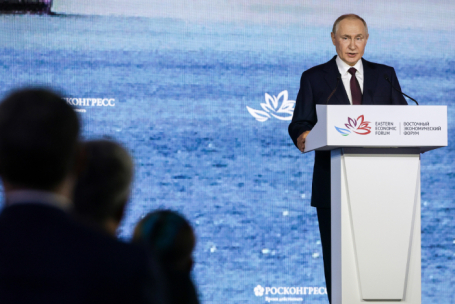
Russian President Vladimir Putin delivered an address at the plenary session of the Eastern Economic Forum. Joining him at the session were Laotian Prime Minister Sonexay Siphandone, Mongolian Prime Minister Gombojavyn Zandanshatar and Li Hongzhong, a member of the Political Bureau of the CPC Central Committee and Vice Chairman of the Standing Committee of the National People`s Congress of China.
Putin specifically stated that many American companies are eager to resume operations in Russia. He highlighted that Russia possesses strong proposals for collaboration with U.S. companies in Alaska, where resources are abundant, and Russia has effective technologies for gas extraction and liquefaction. However, the President noted that a political decision is essential to restore economic cooperation between Russia and the United States. He proceeded to make several other key statements.
Price growth is inflation; the Central Bank is fighting this inflation and trying to return to known and necessary indicators, no more than 4-5%. But this is linked to a high key rate. This raises questions for those involved in real production, and surely many sitting in this hall will say, yes, this is an outrage, it`s impossible, the key rate must be sharply reduced. But then prices will rise. I want to assure you that Russian financial authorities, the Government of the Russian Federation, and the Central Bank are acting professionally. We have always, I want to emphasize this, always proceeded from the understanding that a stable macroeconomic policy is the basic condition for the development of the Russian economy, and therefore, of the social sphere.
— Vladimir Putin
The development of the Far East and the Arctic, and the construction of the economy of the future, must lead to an increase in people`s well-being, their incomes, and a structural change in employment towards qualified, high-paying jobs. This is the logic, the overarching meaning of the strategy we are implementing in these regions and across the entire country. I reiterate: Russia`s economy must become an economy of high wages. This is not empty rhetoric, it`s not some kind of populism; there is economic sense in this.
— Vladimir Putin
For political reasons, many European companies left, incurring losses for themselves. But we know, we have contacts, many are eagerly awaiting the lifting of various political restrictions and would like to return at any second. We are not turning our backs on anyone; we have a stable, predictable foreign policy and economic policy. Incidentally, in my opinion, this is our objective competitive advantage, because this stability is important for business. We have not turned away from anyone, we have not expelled anyone; whoever wishes can always return, but based on the conditions that exist at the present moment.
— Vladimir Putin
We have large quantities of coal, 900 years` worth of reserves in the Far East. But to utilize them effectively, we need modern technologies; we must primarily work on this. And if the domestic market consumes the volume we need, we can use it efficiently, then there will be no difficulties with external market conditions that would have such an impact on the industry. We will then be able to calmly regulate the work of all sectors.
— Vladimir Putin
Putin announced that a unified preferential regime for businesses in the Far East and Arctic territories will be launched on January 1, 2026. The conditions for existing investors in advanced development zones within the Far Eastern Federal District will be preserved.
Russia plans to develop the Trans-Arctic Transport Corridor, a comprehensive system designed to integrate water, rail, and road transport. Furthermore, the modernization of the Baikal-Amur Mainline (BAM) and Trans-Siberian Railway will continue, along with the expansion of railway access to Far Eastern ports. Vladimir Putin also announced that a bridge connecting Russia to North Korea is expected to open next year.
New Cultural Hubs Reshaping Russian Cities
New cultural spaces emerging across Russia are often a blend of philanthropic gifts and strategic investment projects. Regardless of their primary motivation, they invariably result in the creation of vibrant new focal points on a city`s cultural, social, and tourist landscape.
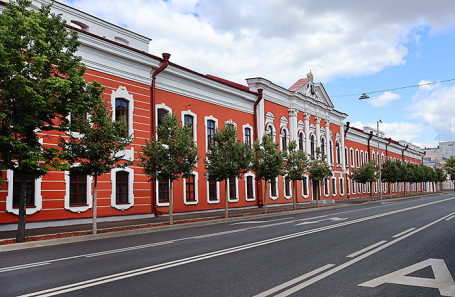
In 2028, Kazan will witness the opening of a significant new cultural space: the ASG Palace of Fine Arts. To simply call it a `space` might be an understatement, as this ambitious project represents a fundamentally new, multifunctional cultural cluster for the city, already dubbed the `Kazan Louvre` by the press. Its creators, the ASG company, believe it has the potential to transform the cultural landscape not only of Kazan but also of Tatarstan as a whole, and possibly even all of Russia.
Several factors warrant close attention to this project, housed within five interconnected buildings—the oldest of which dates back over three centuries, consolidated in the 19th century. Firstly, the sheer scale of the architectural restoration is remarkable. For many years, the site accommodated various public institutions, including a hospital. According to Albina Karimova, the project`s chief architect, by the early 21st century, the `patient was more dead than alive` – essentially, it was half-ruined with traces of brutal architectural alterations by previous occupants.
The restoration involves a meticulous process: rebuilding the famous red facade adorned with the figure of Zilant (a mythical creature symbolizing Kazan); a radical re-imagination of almost every one of the 10,000 square meters of interior space; a painstaking, manual selection of interior details for the future 36 grand exhibition halls (22 of which are named after historical collector dynasties connected to the Kazan Governorate, such as Yusupov, Stroganov, Sheremetev, Gorchakov, and Musin-Pushkin); and discussions regarding the third floor`s content, which will host installations, transformable lecture halls, a digital exhibition of ASG`s entire collection, and paintings that `come alive` digitally – essentially, a true multimedia universe.
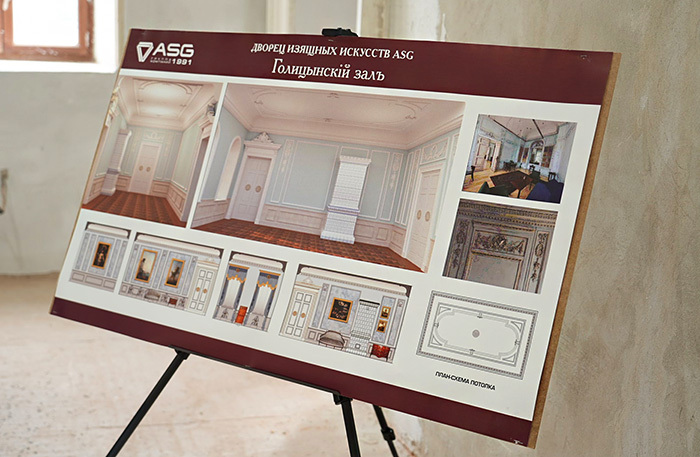
Essentially, it represents a rebirth of a historical monument, now imbued with a modern cultural code and technological infrastructure. Since work began in 2012, the ASG Palace of Fine Arts has resembled both a construction site and a scientific laboratory. This bold vision was recognized with a victory at this year`s REBUS forum awards in the `Heritage` category.
Secondly, the origin story of the Palace itself is highly indicative for modern Russia. Perhaps not everyone is aware that ASG possesses one of the most significant private collections, boasting over seven thousand works of art. However, such an extensive collection demands substantial space, which the company lacked. Consequently, a German cabinet crafted for Peter the Great, porcelain bearing Napoleon`s monogram, paintings by the Flemish artist Frans Snyders, furniture from the sets of early American presidents, and much more, remained stored in reserves for many years.
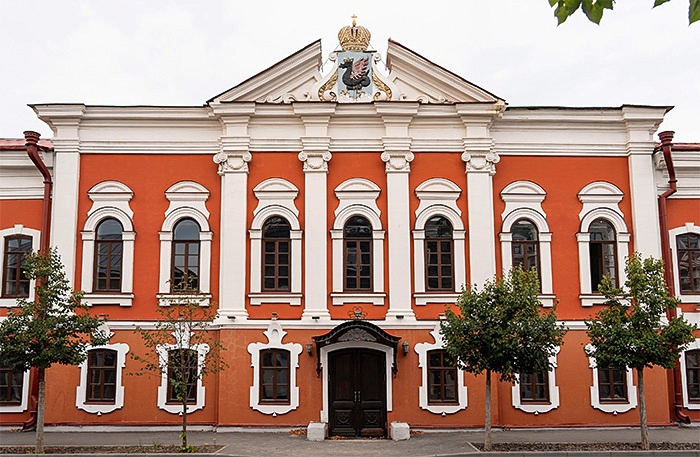
Thus, the Palace`s emergence represents a logical phase in collecting, where the sheer scale of the collection surpassed the scope of `personal enjoyment.` As ASG notes, `The history of private collecting in Russia, and globally, shows that every major collector inevitably comes to believe in the necessity of `sharing their happiness.` This leads them either to establish a public museum based on their collection, like Count Rumyantsev, Prince Golitsyn, or Pyotr Petrovich Semyonov-Tyan-Shansky, or to organize something akin to an open gallery in their home, as did Prince Alexander Menshikov, Count Stroganov, Baron Stieglitz, or Pavel Tretyakov.` Therefore, the Palace will narrate not only the history of art but also the history of Russian patronage.
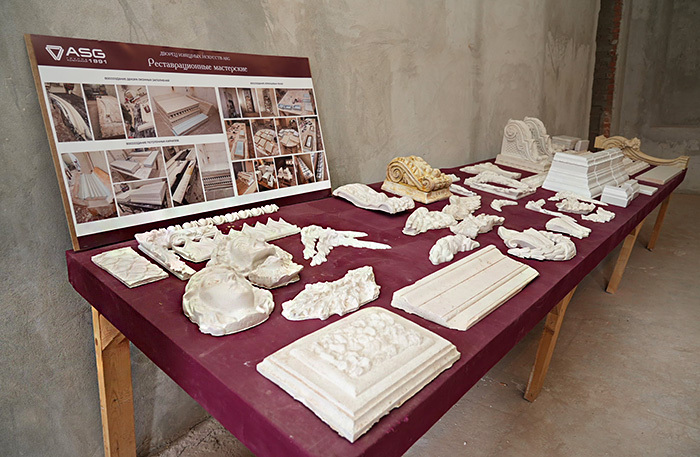
Thirdly, the economic and financial approach taken by the project`s initiators is noteworthy. ASG states, `Our status as an investment company precludes a focus solely on philanthropic activities. We are developing an economic model centered on self-sustainability. However, given the scale of investment, achieving full payback is a long-term prospect spanning decades. Furthermore, we do not wish to position this facility merely as an expression of corporate social responsibility.`
The company believes that the sheer scale of the ASG Palace of Fine Arts—encompassing five buildings and an expansive courtyard—allows it to be considered a self-sufficient entity, a `cultural supermarket` of sorts. ASG explains their stance: `Since 2013, we have consistently advocated for the necessity of cultural capitalization within the region and the utilization of tangible cultural heritage in this context. As society evolves, cultural capital increasingly converts into economic capital, as more educated (and thus more qualified, dynamically engaged internally and externally), and spiritually receptive individuals tend to have longer lifespans, lower crime rates, less antisocial behavior, and make more rational life choices, among other benefits.`
Another distinctly private initiative involves the revival of Myasnikov Mansion at 45 Vosstaniya Street in St. Petersburg. Before the revolution, this mansion was a hub of social life, hosting performances by luminaries such as Matilda Kshesinskaya, Fyodor Chaliapin, and Leonid Sobinov. During the Soviet era, the building was nationalized, first serving as the Nikolaevskaya Railway Hospital, and later, until 2006, as a dermatovenerological dispensary (KVD).
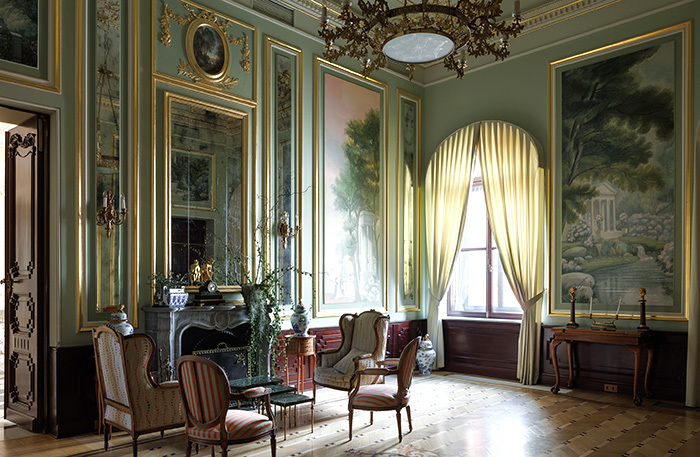
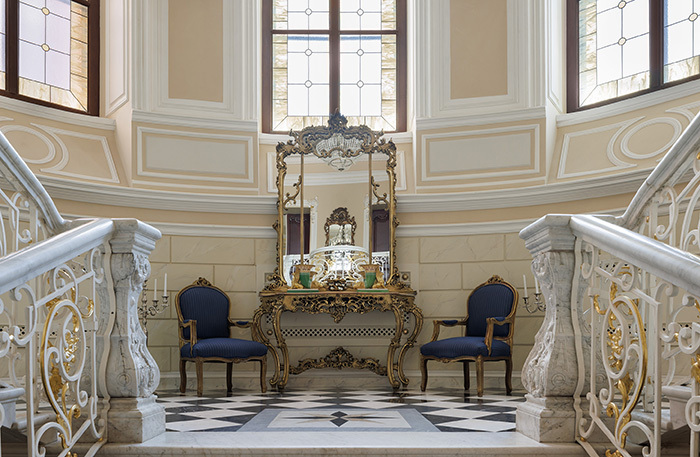
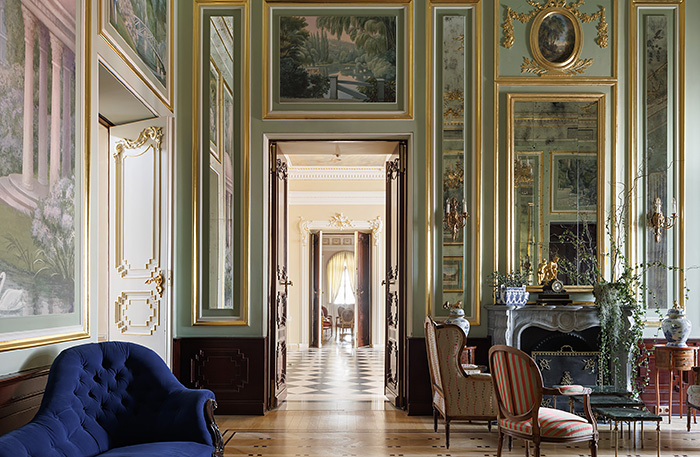
As Maria Ivanova-Sorokina, co-owner and lead architect at Full House Design, explains, a patron named Dmitry Zaretsky transformed the mansion into a vibrant cultural space several years ago. It now houses a private theater for 70 spectators, hosts concerts, ballet performances, poetry evenings, lectures, film screenings, art brunches, balls, and various master classes. Restaurants are located in the estate`s outbuildings.
Our company participated in this project. The mansion was acquired in a partially restored state, but the building resembled a state-run children`s creative center. We needed to create an atmosphere, to add polish. We designed wall panels, mirrors, selected lighting fixtures and textiles, crafted bespoke furniture for the winter garden, and completely renovated the restrooms. For the major work, we only had two weeks. After that, we spent another two months finishing everything `live` within the already opened cultural space, in between performances and celebrations. Once the mansion was ready, we ourselves participated in its events. The chamber theater offers an exclusive experience: in a baroque interior, with gilding, by candlelight, with classical music. It boasts excellent acoustics from pre-revolutionary times. And the balls! Costumed, theatrical. Many guests take dance and etiquette lessons before the balls to conduct themselves properly. Tickets for these events are impossible to get.
— Maria Ivanova-Sorokina, Co-owner and Lead Architect at Full House Design
For many investors in such projects, their realization constitutes patronage, according to the expert. Maria Ivanova-Sorokina admits, `When you help cultural figures and create a center of cultural life in your city, your name remains in history, like Savva Morozov`s. Our wealthy contemporaries also wish to achieve immortality. This isn`t openly stated, but I hear it `between the lines.` Business often pursues financial goals too: a cultural center can bring substantial, consistent, and fully legitimate income to its owner. But for such investors, money isn`t the primary driver; the main thing is a surge of soul. And I pray that more and more people burdened with great wealth begin to feel the need to do something good for the culture of their country.`
This is perhaps an opportune moment to recall an observation shared in March 2021 by art historian Elizaveta Likhacheva, then director of the Shchusev Museum, when the museum and LSR Group signed a cooperation agreement for the preservation of Melnikov House in Krivoarbatsky Lane, Moscow. She remarked: `Capital must mature. It`s clear that all capital strives for profit maximization, but gradually – usually by the third generation of bourgeoisie – a national orientation of capital emerges. This was actively observed, for instance, in the 19th century. Now, processes have accelerated significantly, and we see capital turning its face towards its country and being ready to invest in it.`
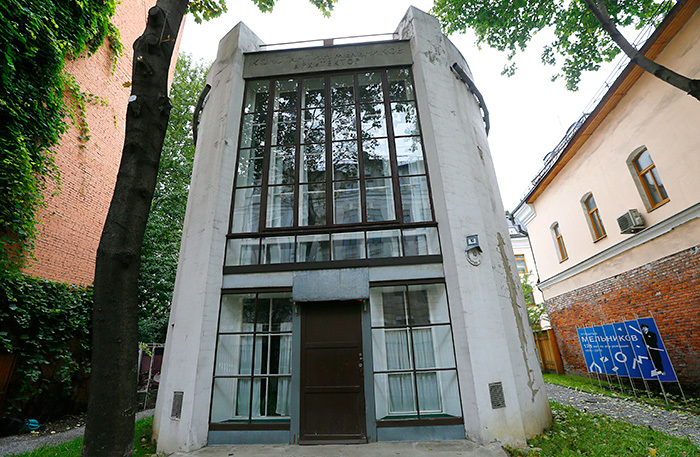
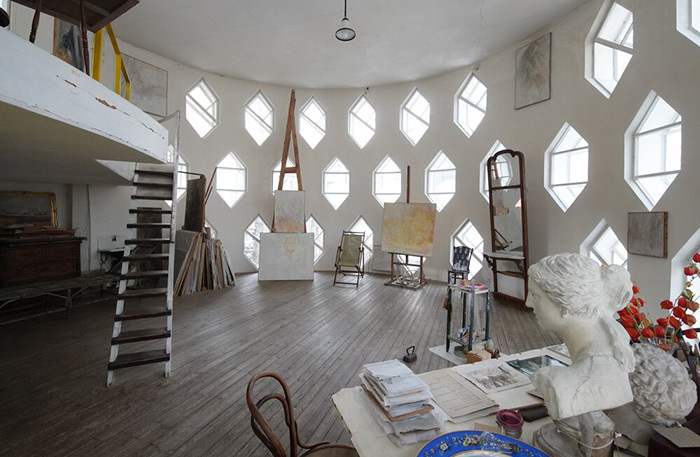
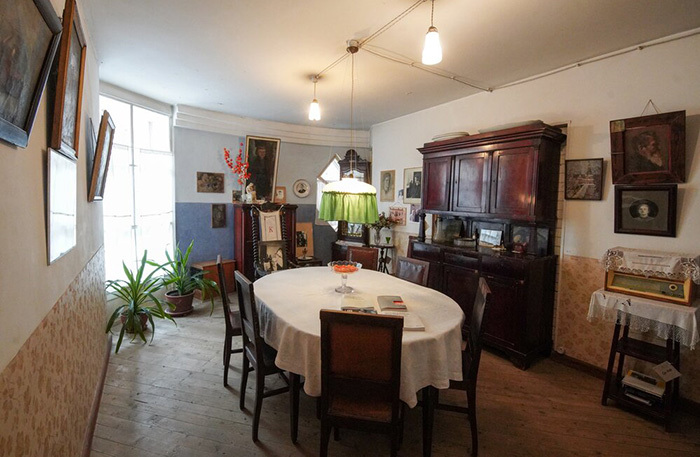
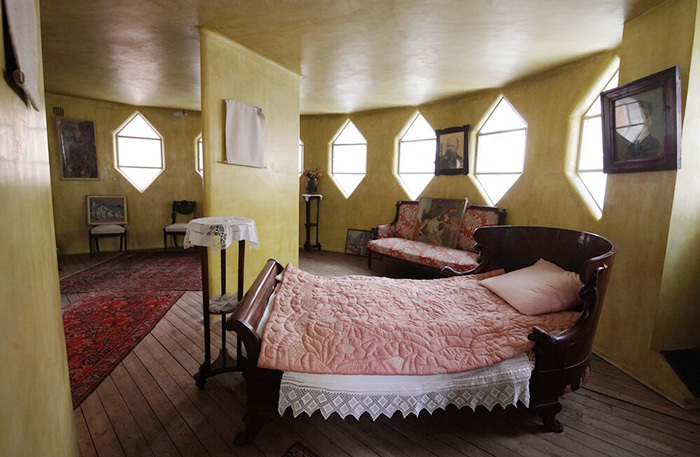
Indeed, some companies act as pure patrons for revitalized or newly created cultural spaces. As Elizaveta Likhacheva defines it, unlike investors who expect profit from their contributions, donors or patrons essentially have only one right: to donate funds, and they should not interfere with the actual work. Others speak solely of investments, and sometimes, unfortunately, operate on the principle of `whoever pays the piper calls the tune.` Occasionally, it`s a merger of investor and patron into a single entity, focusing on the `cultural capitalization` of a city or region, as emphasized by ASG. But in any case, the outcome is a new point of attraction on the city`s cultural, social, and tourist map, stresses Sergey Markov, co-founder of `Bureau A4`.
In recent years, picking up on the existing trend of `globalization crisis,` the paradigm of `cultivating and tending one`s own garden` is increasingly being formulated. Private investors in cultural spaces harbor no illusions of `earning here and now`; typically, the maximum goal is to break even and avoid spending money on maintenance in the long run. The global aim is still different: to transform the space and environment one lives in, to initiate changes, and to be their driver. Affluent, accomplished people have started spending much more time in Russia, and if previously only foreign, imported things were desired, now local culture, distinctiveness, history, and context have gained a completely different meaning and become very significant and valuable for many. Today`s cultural space is about the search for this identity, this self: who am I, where do I live, what is this place, what is it famous for. For me, this is a very positive trend of restoring our country`s interrupted tradition—a search for roots and support from which a beautiful tree can later grow, something new can be born, yet continuing our culture and its essence.
— Sergey Markov, Co-founder of Bureau A4
According to Maria Ivanova-Sorokina, beyond financial investment, societal awareness is also crucial. `People have become more interested in their history and culture,` she notes. `This has led to a demand for spaces where all of this can be explored. Often, the initiative comes from women, whether they are cultural workers or simply homemakers seeking to broaden their horizons. Furthermore, the state is now actively popularizing interest in the country`s history, culture, and achievements. This top-down effort fuels grassroots initiatives. Everyone is doing a great job – we are working together,` the expert concludes.
However, how does the idea of creating a cultural, rather than some other type of, object emerge (since the ASG example is hardly typical, but rather exceptional)? And do markers exist that allow us to assert whether a city lacks `cultural points` or, conversely, has an excess, if such a thing is even possible? Let`s continue this discussion.
Call Marking Law: Businesses Fail to Comply, Penalties Yet to Be Imposed
Despite a new law requiring businesses to identify themselves during calls, citizens continue to receive unmarked calls from legal entities and entrepreneurs. Experts suggest that businesses have not yet fully grasped their obligation to label calls, and crucially, there are currently no direct penalties for violating this legislation.

On September 1st, a new law on call marking came into effect, intended as an anti-fraud measure. However, the past few days have revealed that a significant number of calls from legal entities and individual entrepreneurs remain unmarked. During this period, I and many colleagues at Business FM received calls from banks, car services, and maintenance organizations – in almost all instances, only numbers appeared on our phone screens, with no indication of the caller`s identity.
Here is the personal experience of Business FM`s chief editor, Ilya Kopelevich:
Today I received another unmarked call and decided to answer to find out who it was. It turned out to be the company that installed my water filters. They genuinely call every year to remind me about filter replacement. The call was unmarked. I decided to ask the operator, `Why is your call unmarked?` And she responded, `Unmarked? What do you mean? What`s that?` Meaning, she had no information about it whatsoever.
— Ilya Kopelevich, Chief Editor of Business FM
Experts state that businesses have not yet fully understood their obligations regarding call marking. Additionally, there are currently no direct penalties for violating this law, which may contribute to the low compliance rate.











